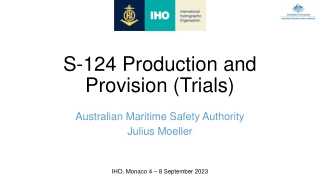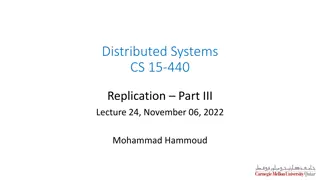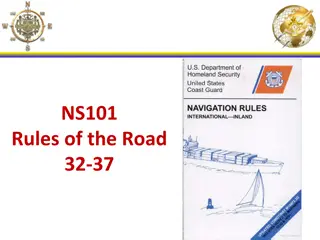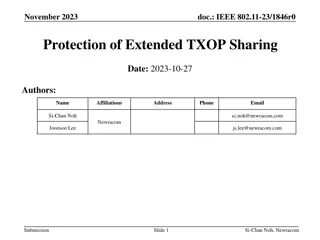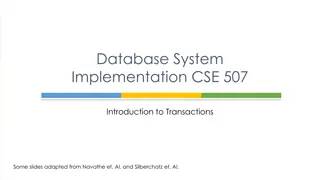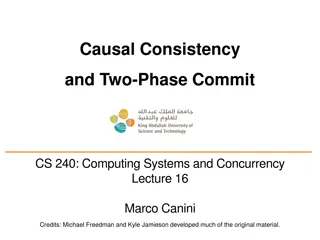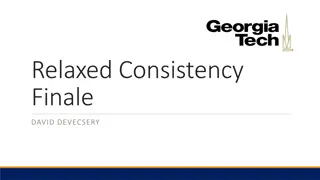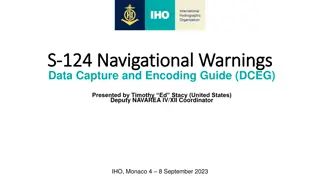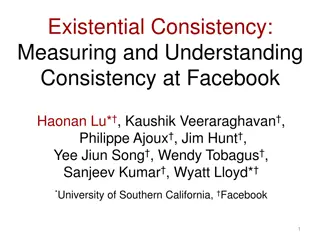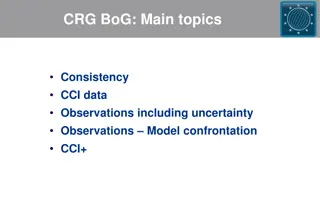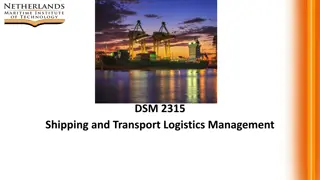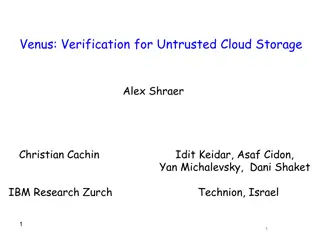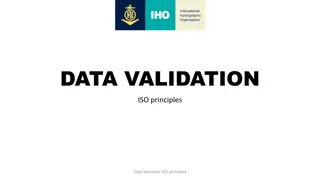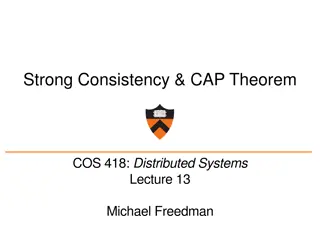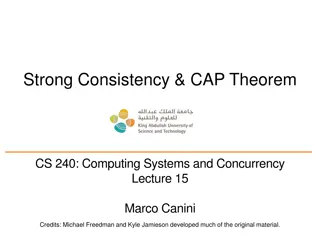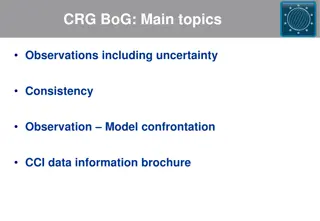Ensuring Consistency in Navigational Data Sharing
This content discusses the importance of addressing overlapping Electronic Navigational Chart (ENC) data to enhance safety in navigation. It highlights the risk posed by inconsistencies in charting, emphasizes the need for collaboration among ENC producers, and outlines a structured process for managing overlaps. The aim is to align ENC content to reduce navigational risks resulting from variations in charted entities and geographic areas.
Download Presentation

Please find below an Image/Link to download the presentation.
The content on the website is provided AS IS for your information and personal use only. It may not be sold, licensed, or shared on other websites without obtaining consent from the author.If you encounter any issues during the download, it is possible that the publisher has removed the file from their server.
You are allowed to download the files provided on this website for personal or commercial use, subject to the condition that they are used lawfully. All files are the property of their respective owners.
The content on the website is provided AS IS for your information and personal use only. It may not be sold, licensed, or shared on other websites without obtaining consent from the author.
E N D
Presentation Transcript
Context IC-ENC Overlapping Data Policy WENDWG : outcome, further activities Conclusions 2
IHO Resolution on Elimination on overlapping ENC data RHC asses areas with significant navigational differences: demonstrable risk to safety of navigation The RHC may seek the assistance of a Regional Coordination Centre to assist in this assessment Overlap real issue Unpredictable behaviour in ECDIS Agreed Logic rules (far) in the future Better to treat at source 10/10/2024 16/04/2012 3 Powerpoint Title
A check for Overlaps is performed at each validation. If one is identified Is it possible to resolve? Liaise between IC-ENC members Liaise between IC-ENC member and other RENC or non- RENC member Yes (technical) great, all part of the RENC service , problem prevented! 5
No (geopolitical?) issue ENC is last resort First: risk Assessment performed, reporting to both producers Second: facilitation to reduce risk level before issue of ENC 6
IC-ENC will then facilitate the work of the two producers (e.g. by coordinating the exchange of data) to align the content of the affected ENCs to be as consistent as possible with each other, noting any fixed national production policies This is to reduce, as far as possible, the level of risk resulting from variation in the charting of identical entities and/or identical geographic areas 7
After completion of this process (up to the pragmatic level of achievable agreement between the affected producers), issue overlapping ENC, but via a structured process: List overlap in README.TXT file to VARs Update Overlaps and Gaps Analysis spreadsheet Includes risk assessment Distributed to HO, RHC, WENDWG, IHO-secretariat as required Policy can be found here: 8
The following criteria are assessed by the IC- ENC Validator: Content differences between the two ENCs Geographic Location Shipping Density Size of Overlap Scale of the ENCs Routing patterns ECDIS behaviour 9
An Overall severity of Risk is reached; Low, Medium, High. Structure, combination of Rules Use band 1, always low Judgement call validator Dominant criterion 10
10/10/2024 16/04/2012 11 Powerpoint Title
Endorsed IC-ENCs policy with further discussion at IRCC IC-ENC and Region F ENC Co-ordinator (France) to work together on MBSHC region as a pilot study Each nation is responsible for assessing the risk of its overlaps IC-ENC s report is only for guidance. 17
March/April 2017: National report provided to each member who has overlapping ENC data National list of overlaps Asked permission to share ENC data as required April 2017: Attended Region F Charting Work Group (at IHO Assembly) Briefed on policy developments MBSHC overlap report and cover letter issued to all MBSHC members, in preparation for RHC meeting 18
May 2017: Discussed at IC-ENC Technical Conference HOs have found the report very useful, are using it to work towards resolving the overlaps identified in the reports. Several nations highlighted that although they want to resolve all of the overlaps identified in their reports, significant effort and time is required to do so. Malaysia described their multi-lateral approach to co- producing ENCs in certain regions, e.g. the Malacca Straits. This requires co-ordination effort, but means there is no overlapping data. Example of best practice. 19
September 2017: Steering Committee meeting Review of policy / progress / value versus effort Review of Region F trial Ongoing: IC-ENC members to review and respond to national reports 20
Making an assessment of each instance of overlapping data is important and valuable simply reporting the number of overlaps in a region is useful, but is a little too crude). IC-ENC s risk assessment is for guidance only The responsibility remains with the ENC Producers Local factors may take precedence IC-ENC s efforts on overlap can only be directed towards IC-ENC members data There are many remaining overlaps outside of this 21



